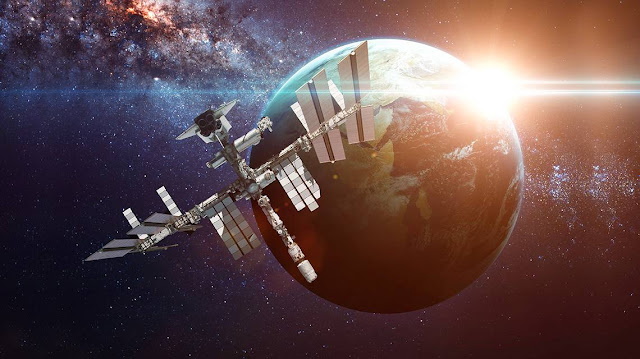Featured
- Get link
- X
- Other Apps
Space Exploration and Satellite Technology
Space exploration and satellite technology are two closely related fields that have advanced our understanding of the universe and our place in it.
Space exploration is the process of sending spacecraft
beyond Earth's atmosphere to explore other planets, moons, asteroids, and
comets. The first human-made object to reach interplanetary was the Soviet
Union's Sputnik 1 satellite, which was launched in 1957. Since then, we have
sent spacecraft to every planet in our solar system, and even beyond.
Satellite technology is the use of satellites to collect
data and information from space. Satellites can be used for a variety of
purposes, counting weather forecasting, communications, navigation, and Earth
observation. The first satellite to be used for Earth observation was NASA's
Landsat 1, which was launched in 1972.
The technologies used in space exploration and satellite technology are constantly evolving. Some of the most important technologies in
these fields include:
Launch vehicles are used to send spacecraft into space.
Launch vehicles must be powerful enough to escape Earth's gravity and carry the
spacecraft to its desired destination.
Propulsion systems are used to move spacecraft in space.
Propulsion systems can be either chemical or electric. Chemical propulsion
systems use fuel and oxidizer to create thrust, while electric propulsion
systems use electricity to create thrust.
Communication systems are used to send & receive data
between spacecraft and Earth. Communication systems must be able to operate in
the harsh environment of space.
Navigation systems are used to track the position of
spacecraft in space. Navigation systems must be accurate and reliable.
Sensors are used to collect data from space. Sensors can be
used to amount a variety of things, such as temperature, pressure, radiation,
and the composition of the atmosphere.
Space exploration and satellite technology are rapidly
advancing fields that are opening up new possibilities for humanity. These
technologies have the potential to help us learn more about our universe,
Earth, and ourselves.
Here are some of the benefits of space exploration and
satellite technology:
They help us to better understand our place in the universe.
By studying other planets and moons, we can learn more about the formation and
evolution of our own solar system. We can also learn about the possibility of
life elsewhere in the universe.
They improve our understanding of Earth. Satellites can be
used to monitor Earth's climate, weather, and natural resources. This
information can be used to improve our ability to manage our planet and
mitigate the effects of climate change.
They provide us with new technologies. The technologies
developed for space exploration and satellite technology have many applications
in other fields, such as medicine, engineering, and transportation.
They inspire us to dream big. The exploration of space is a
reminder of the human potential for greatness. It inspires us to think about
the future and what we can achieve as a species.
What are the technologies used in space exploration?
There are many technologies used in space exploration, but
some of the most important ones include:
Launch vehicles: Launch vehicles are used to send spacecraft
into space. They must be powerful enough to escape Earth's gravity and carry
the spacecraft to its desired destination.
Propulsion systems: Propulsion systems are used to change
spacecraft in space. They can be either chemical or electric. Chemical
propulsion systems use fuel and oxidizer to create thrust, while electric
propulsion systems use electricity to create thrust.
Communication systems: Communication systems are used to
send and receive data between spacecraft and Earth. They must be able to
operate in the harsh environment of space.
Navigation systems: Navigation systems are used to track the
position of spacecraft in space. They must be accurate and reliable.
Sensors: Sensors are used to collect data from space.
Sensors can be used to amount a variety of things, such as temperature,
pressure, radiation, and the composition of the atmosphere.
Robotics: Robotics is used to build and operate spacecraft.
Robots can achieve tasks that are too dangerous or difficult for humans to do.
Life support systems: Life support systems are used to
provide astronauts with the air, water, and food they need to survive in space.
Materials science: Materials science is used to develop new
materials that are strong, lightweight, and resistant to the harsh environment
of space.
Computer science: Computer science is used to develop the
software that controls spacecraft and analyzes data from space.
These are just a few of the many technologies that are used
in space exploration. As the field of space exploration continues to advance,
new technologies will be developed to help us explore even further into the
universe.
Here are two technologies that were invented in space and
are now used on Earth:
Freeze-dried food: Freeze-dried food was invented by NASA to
provide astronauts with a lightweight and nutritious food source. Freeze-dried
food is now used by campers, hikers, and other people who need to pack light.
Cordless tools: Cordless tools were invented by NASA to
provide astronauts with a way to work without the need for power cords.
Cordless tools are now used by everyone from mechanics to homeowners.
The technologies used in space exploration have a wide range
of applications on Earth. They are helping us to improve our understanding of
the universe, develop new products and technologies, and make our lives better
in many ways.
- Get link
- X
- Other Apps
Popular Posts
Challenges And Debates Sociotechnical Systems
- Get link
- X
- Other Apps


Comments
Post a Comment